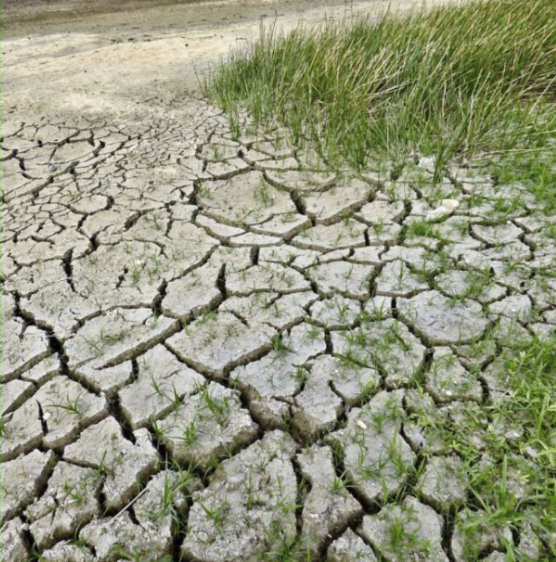A saúde do solo é importante?

Este conteúdo foi publicado originalmente aqui por Solena Ag Inc.
Em uma olhada rápida:
- São necessários mais de mil anos para gerar de 1 a 3 centímetros de solo superficial
- O impacto global que as atividades humanas causaram nos recursos naturais da Terra aumentou nos últimos 150 anos, levando a problemas ambientais e de saúde
- Seja como consumidores ou como produtores, é essencial que saibamos as consequências de não cuidarmos de nossos solos
O solo é um de nossos recursos mais valiosos e, sem ele, a vida na Terra não prevaleceria.
É certo que já ouvimos esse fato antes. Talvez tenhamos aprendido sobre isso na escola ou durante uma conversa amigável, mas será que pensamos em Saúde do solo como um grande negócio?
Além das árvores e plantas que encontramos nas calçadas e nos jardins, os moradores da cidade não estão muito em contato com a natureza e talvez seja mais fácil pensar que a questão da saúde do solo não tem nada a ver conosco. No entanto, a verdade é que nosso bem-estar está fortemente ligado a esse recurso natural que, de acordo com a Organização das Nações Unidas para Agricultura e Alimentação (FAO), não é renovável. 1
Aqui está um pouco de contexto...
O solo é composto por:
- 45% de matéria mineral
- 25% de água
- 25% de ar
- E apenas 5% de matéria orgânica encontrada na camada superior
Essa camada superior abriga um quarto da diversidade biológica do nosso planeta.2
Pode não ser óbvio a olho nu, mas o solo é um ecossistema complexo. Vamos levar em consideração o fato de que há mais organismos vivos contidos em uma colher de solo saudável do que pessoas que habitam nosso planeta, ou que são necessários mais de mil anos para gerar de 1 a 3 centímetros de solo superficial.
Em resumo: A saúde do solo deve se tornar uma prioridade para todos nós.
Então, o que significa a saúde do solo?
Esse conceito se refere a à capacidade do solo de funcionar como um sistema vivo, mantendo suas propriedades físicas, químicas e biológicas. Alguns indicadores de saúde do solo incluem a disponibilidade de nutrientes e oxigênio para as raízes, o sequestro de carbono, a fertilidade e a diversidade biológica. Infelizmente, sabemos agora que, enquanto esses fatores diminuem, outros, como toxicidade, salinização e contaminação, aumentam. 3, 4, 5
O impacto global que as atividades humanas exercem sobre os recursos naturais da Terra aumentou nos últimos 150 anos e, por causa disso, surgem preocupações com a saúde humana e as questões ambientais. Não importa se temos um papel como consumidores ou como produtores agrícolas, é nossa responsabilidade conhecer as consequências de não cuidarmos de nossos solos.
Condições atuais do solo
De acordo com o primeiro princípio do Carta Mundial do SoloOs solos são fundamentais para a vida na Terra, mas as pressões humanas sobre os recursos do solo estão atingindo limites críticos.
Práticas como a monocultura e o uso de agroquímicos, como fertilizantes, pesticidas e herbicidas, fazem parte do práticas inadequadas de manejo do solo que se concentram apenas na produtividade das culturas e não em sua qualidade. Além disso, considera-se que essas técnicas de agricultura intensiva, juntamente com o desmatamento, são os principais culpados pela erosão do solo.
Até o momento, 33% do solo do mundo já foi degradado. Entretanto, de acordo com Maria-Helena SemedoSegundo um funcionário da ONU da FAO, se o solo superficial continuar a se deteriorar no ritmo atual, ele desaparecerá em cerca de 60 anos.6
Um quadro assustador
Os processos naturais têm sua própria lógica, mesmo que não seja óbvia. Nesse cenário específico, os solos desempenham um papel fundamental em processos como sequestro de carbono e absorção de água que, além de alimentar os microorganismos, reduzem as mudanças climáticas.
Por outro lado, os métodos usados pela agricultura industrial não apenas ameaçam o meio ambiente, mas também representam um risco imediato para a saúde humana já que pelo menos 95% dos nossos alimentos vêm do solo.7
Ter solos saudáveis é essencial para garantir a segurança de nossos alimentos, mas, conforme mencionado anteriormente, a presença de toxicidade e a contaminação do solo atingiram níveis críticos.
Por exemplo, Relatórios do consumidor revelou em um estudo recente que quase 50% dos sucos de frutas analisados continham níveis preocupantes de metais pesados. 8 Se você se pergunta como esses metais vão parar em nossos alimentos, a resposta está no uso de agroquímicos, como pesticidas, ou em terras agrícolas contaminadas. 9, 10, 11
De acordo com o estudo:
"Durante muitos anos, mesmo quantidades modestas de metais pesados podem aumentar o risco de câncer de bexiga, pulmão e peleproblemas cognitivos e reprodutivos; e diabetes tipo 2, entre outras condições."
A saúde do solo depende de nossas ações
Até o momento, está claro que a qualidade das culturas e do meio ambiente tem uma forte ligação com a qualidade dos solos, mas não devemos nos esquecer de que as consequências dependem de nós. De modo geral, a sustentabilidade do solo é um elemento fundamental para o desenvolvimento agrícola, o controle do clima e a preservação dos recursos.
A agricultura sustentável busca manter um alto rendimento na produção agrícola sem sacrificar a qualidade do solo ou a segurança alimentar. Além disso, o manejo sustentável do solo inclui uma abordagem que se concentra em questões socioculturais e na capital biológico encontrado na vegetação e nos microorganismos.
Por fim, como podemos ajudar a manter a saúde do solo?
Como produtor agrícola: É hora de fazer algumas pesquisar e adotar técnicas sustentáveis que não apenas mantêm sua produção, mas agregam valor às suas culturas. Testar o solo com uma análise microbiológica, bem como aplicar micróbios que promovem o crescimento das plantas, culturas de cobertura e técnicas de rotação de culturas são algumas das melhores alternativas para melhorar suas terras saudáveis.
Como consumidor: Você pode optar por produtos que tenham sido colhidos organicamente, entrar em contato com os produtores para pressioná-los a adotar práticas que respeitem o solo ou até mesmo participar de uma associação voltada para a promoção de políticas que favoreçam o desenvolvimento sustentável dos solos.
O mais importante é que você faça da Saúde do Solo um tópico relevante em sua vida e continue pesquisando. Siga este blog para saber mais sobre a saúde do solo, agricultura sustentável e muito mais!
Referências
1 http://www.fao.org/resources/infographics/infographics-details/es/c/278964/
2, 7 http://www.fao.org/3/i8864es/I8864ES.pdf
3 http://www.fao.org/soils-portal/soil-degradation-restoration/mejoramiento-de-la-salud-del-suelo/es/

